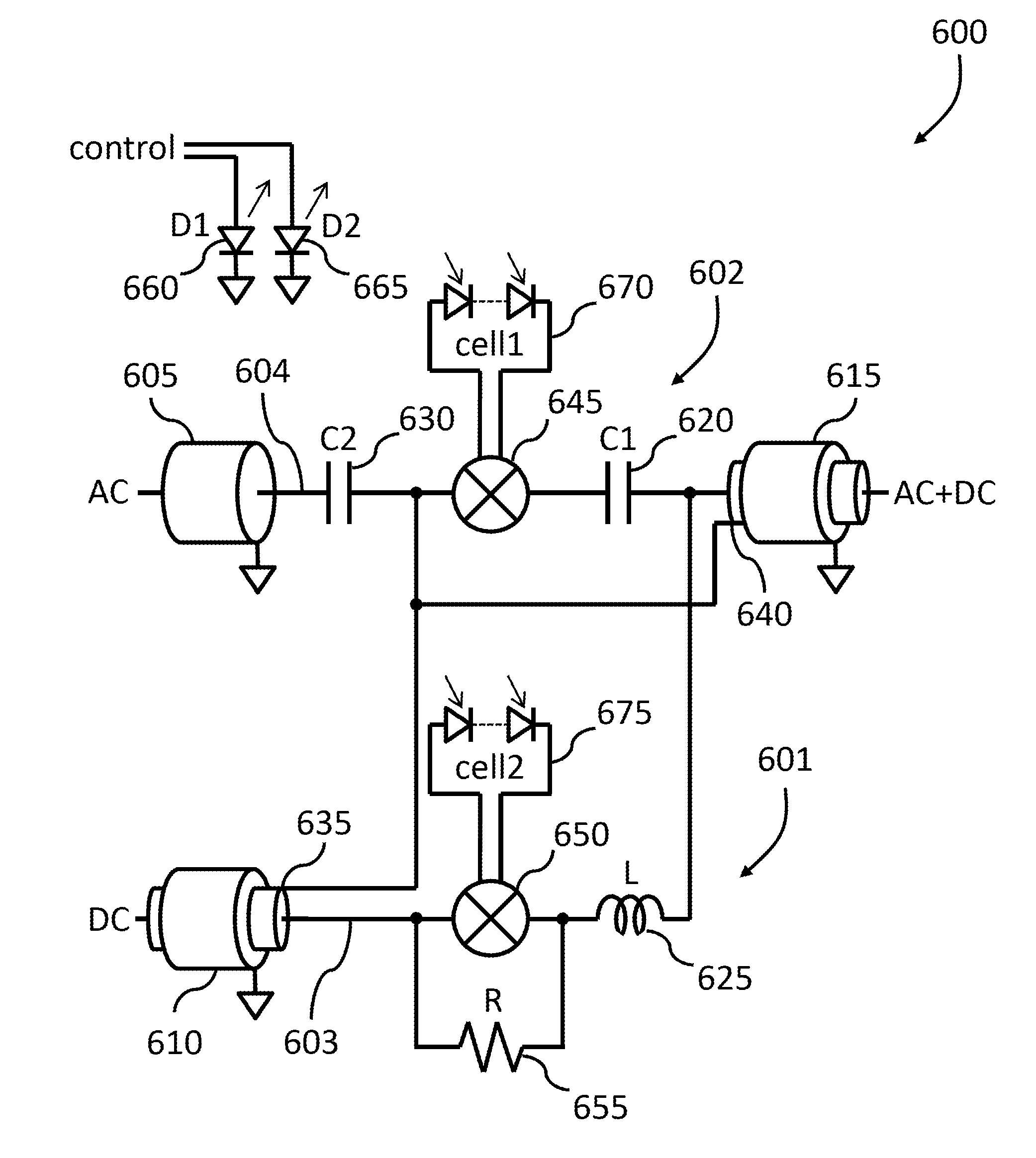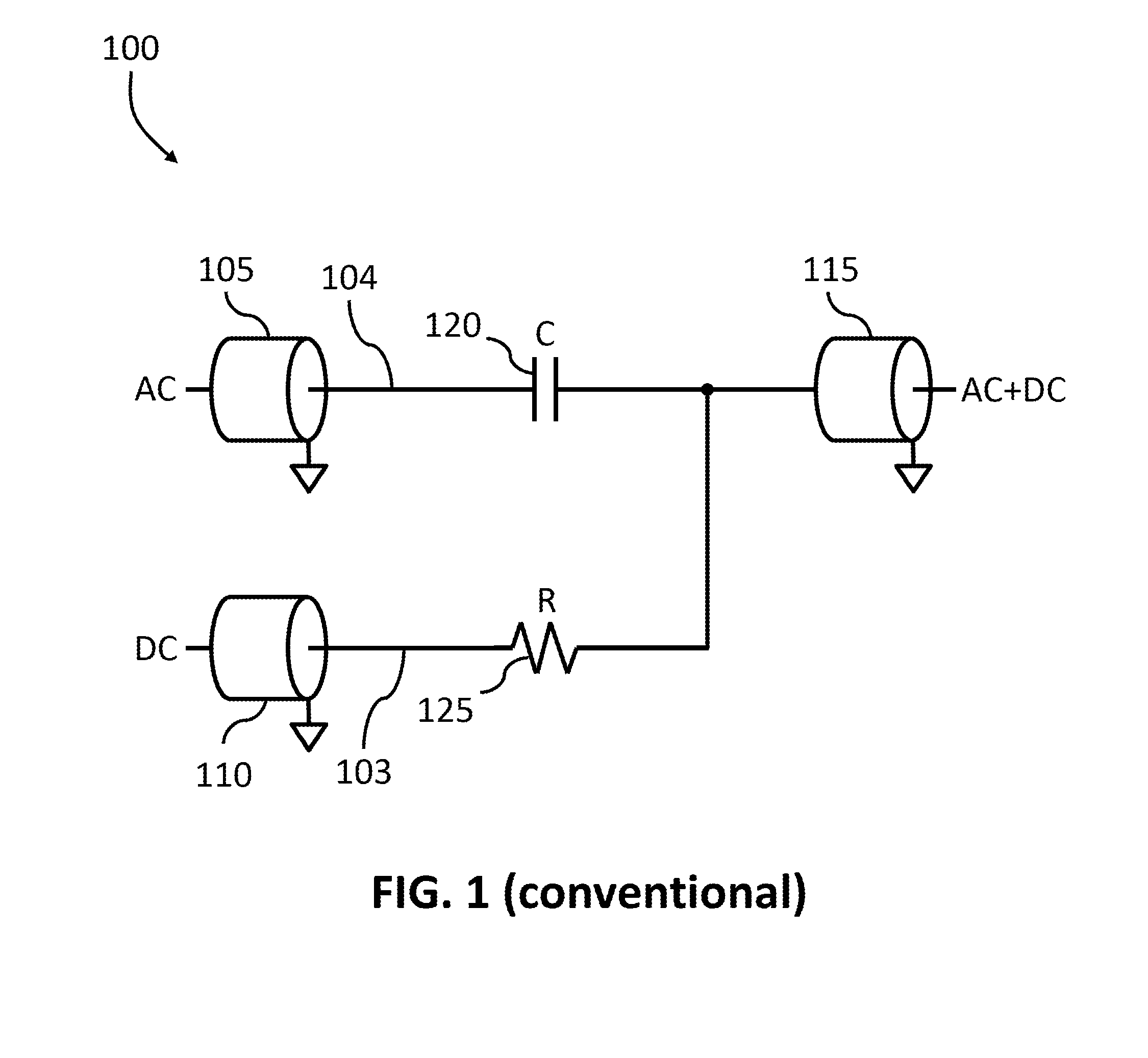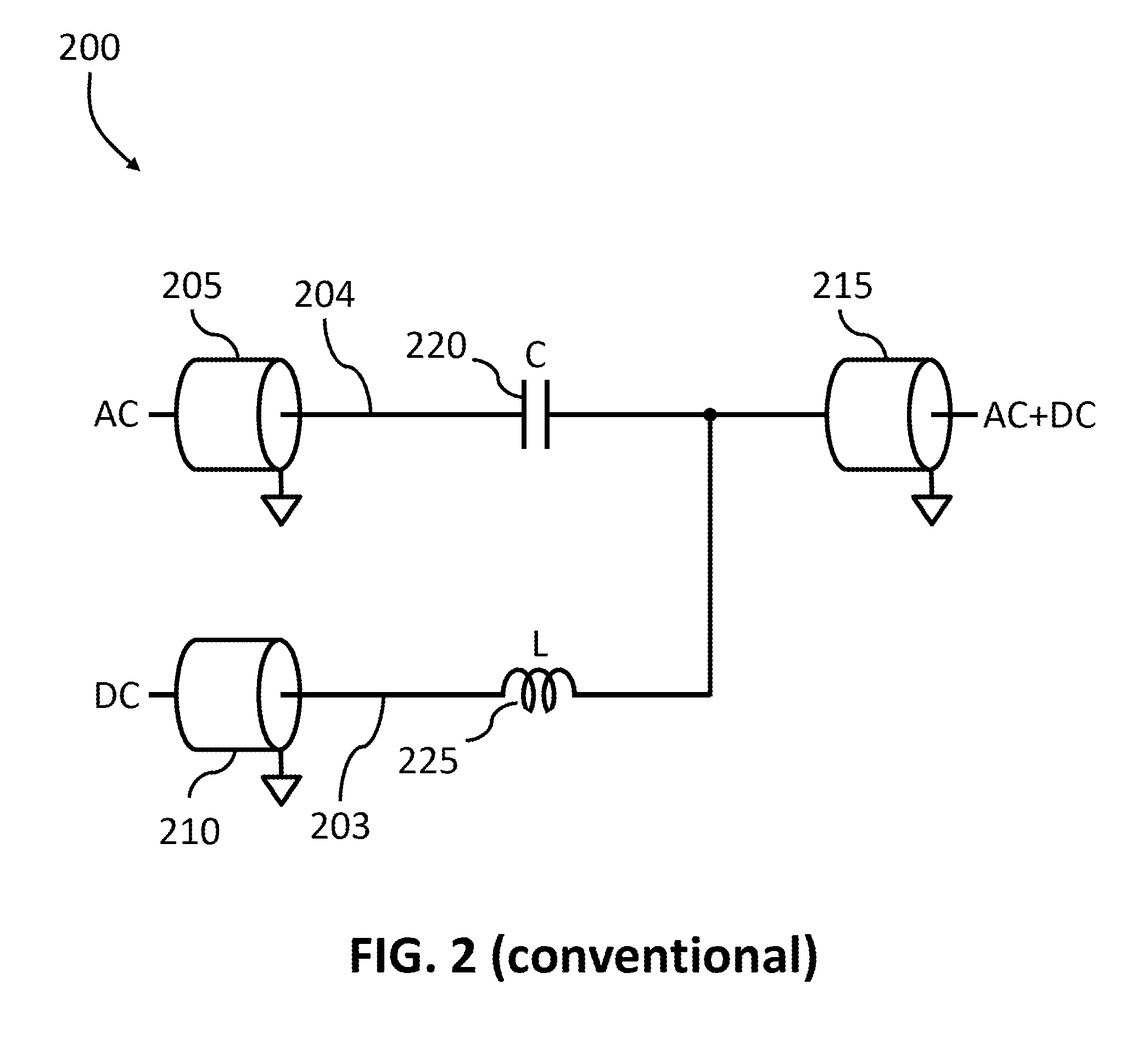Configurable bias tee
a bias tee and configuration technology, applied in the field of bias tees, can solve the problems of limited limited overall dc performance of this bias tee design, and limited ac performance of this design
- Summary
- Abstract
- Description
- Claims
- Application Information
AI Technical Summary
Benefits of technology
Problems solved by technology
Method used
Image
Examples
Embodiment Construction
[0021]FIG. 1 shows a simple conventional bias tee network 100 including a coaxial connector 105 serving as an AC signal port, a coaxial connector 110 serving as a DC signal port, a coaxial connector 115 serving as a combined AC+DC signal port, a capacitor 120 coupled between the AC signal port 105 and the AC+DC signal port 115, and a resistor 125 coupled between the DC signal port 110 and the AC+DC signal port 115. The capacitor couples an AC signal to the AC+DC port, but generally blocks a DC signal from passing back to the AC port, thereby providing an AC signal path 104 through the bias tee. The resistor couples a DC signal to the AC+DC port, thereby providing a DC signal path 103 through the bias tee. As explained above, this type of bias tee allows for generally good AC coupling, but its DC performance is limited by the resistor in the DC signal path.
[0022]FIG. 2 shows a conventional bias tee network 200 that offers improved DC performance compared to the bias tee shown in FIG....
PUM
 Login to View More
Login to View More Abstract
Description
Claims
Application Information
 Login to View More
Login to View More - R&D
- Intellectual Property
- Life Sciences
- Materials
- Tech Scout
- Unparalleled Data Quality
- Higher Quality Content
- 60% Fewer Hallucinations
Browse by: Latest US Patents, China's latest patents, Technical Efficacy Thesaurus, Application Domain, Technology Topic, Popular Technical Reports.
© 2025 PatSnap. All rights reserved.Legal|Privacy policy|Modern Slavery Act Transparency Statement|Sitemap|About US| Contact US: help@patsnap.com



